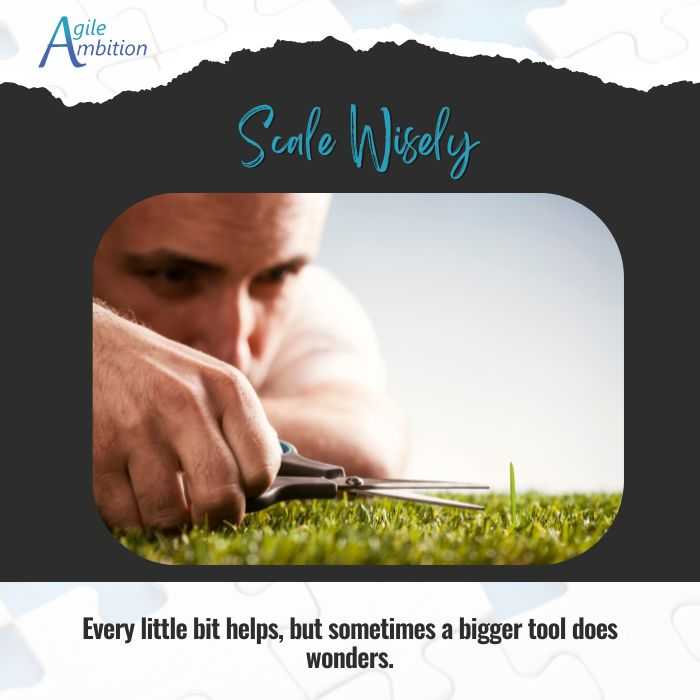Software Built and Delivered in Pieces Is Known As…

Software built in increments is like diamond painting—one careful piece at a time. It’s tempting to rush the process, but laying each gem deliberately is what transforms effort into art.
Software Built and Delivered in Pieces Is Known As…
Software built and delivered in pieces is known as incremental development. This approach helps teams by breaking down software into smaller, manageable increments, allowing them to address issues early, adjust requirements, and manage risks. While the benefits are clear, teams often struggle to ensure increments fit together properly.
Unlike a diamond painting, where each piece has a precise place and a clear guide shows you exactly where everything fits, incremental development doesn’t come with a predefined map.
Furthermore, the iterative nature of software development—where each cycle refines and builds upon previous work—can blur the lines between incremental and iterative processes, making it easy to confuse the two. To navigate this complexity, teams must understand how to effectively combine these methods to create a well-integrated product.
What Is the Difference Between Incremental and Iterative Development?
The difference between incremental and iterative development boils down to their core focus. Incremental development is about building the product piece by piece, with each new part adding functionality, while iterative development focuses on refining the product through repeated cycles. It’s easy to think of these approaches as opposites, but teams benefit most when they blend both strategies.

Incremental development is like diamond painting—each piece integrates with existing pieces, and you reveal the final image bit by bit. But iterative development? That’s more like how artists sketch: starting with rough circles, stepping back to check the layout, and refining details with each pass until the image pops into realism.
Recognizing the difference between iterative and incremental development isn’t just an exercise in theory—it’s about loading your toolkit with methods that can boost flow and value delivery —because that’s the real goal. Incremental development helps us keep our work right-sized and manageable, while iterative development reminds us not to get stuck chasing perfection over progress.
While each approach tackles complexity in its own way, combining them allows teams to adapt and respond to change effectively.
How Do Agile Approaches Use Incremental and Iterative Strategies?
Agile approaches combine incremental and iterative strategies to enable teams to make quick progress, inspect their work, and adapt based on feedback. This dual approach ensures that the product evolves in line with stakeholder needs, enabling responsiveness to change. Relying solely on one strategy limits a team’s ability to adjust course effectively.
Using diamond painting as a metaphor for incremental development, you can easily see your progress and pause at any time, but the predefined map for the image locks you into the original plan. If you realize the colors aren’t right or the design doesn’t fit your space, you’re stuck with what you started—the incremental process doesn’t account for adaptation. This shortfall illustrates the limitation of only using incremental development: there’s no built-in mechanism for adjustment if the initial plan falls short.

Conversely, iterative development without incremental progress can also be problematic. It’s like continuously refining one huge chunk of work, which risks getting stuck in a cycle of endless tweaks and revisions, chasing perfection without making meaningful progress.
Combining both strategies provides a balanced approach. Incremental steps create natural checkpoints where teams can inject new requirements or iteratively process feedback, ensuring they stay aligned with their goals. This blend of progress and refinement helps teams adapt swiftly, maintaining the flexibility to navigate changes effectively.
The built-in focus on responding to change is just one of the key ways Agile approaches differ from traditional project management methods like Waterfall.
How Do Iterative and Incremental Models Differ From Waterfall or Traditional Project Management?
Iterative and incremental processes differ from Waterfall in embracing change and delivering value continuously rather than following a fixed plan. Waterfall, bless its heart, still clings to the idea that if you just plan hard enough at the start, everything will go smoothly.
If diamond painting followed Waterfall, you’d rip off the entire protective cover, dump all those shiny little gems into their color-coded bins, and spend the next eternity hunched over, sticking them down in one go. Only after you’re cross-eyed and your back’s screaming do you step back to see—surprise!—you’ve crafted a stunning sack of flour, not the flower you expected. And now, all those hours are gone, along with your will to ever diamond paint again. There’s no salvaging that mess unless you start from scratch, and who’s got time for that?

Agile, on the other hand, lets you adapt on the fly. This capability is where the diamond painting metaphor starts to lose its sparkle. Think of it like this: you’d be stepping back every few minutes, making tweaks, and adjusting until the diamonds morphed into the masterpiece in your mind. It’s less about following a rigid pattern and more about letting the image evolve into something that feels just right, even if it wasn’t part of the original plan.
Though embracing a flexible approach sounds great, teams can quickly drown if they lack practices to support continuous change.
What Role Does CI/CD Play in Incremental Software Delivery?
CI/CD plays a crucial role in incremental delivery by providing a framework for continuous integration, testing, and deployment, enabling teams to respond swiftly to feedback. Maintaining an iterative approach without the support of CI/CD tools can quickly become overwhelming.
Think of it like diamond painting without the right tools—placing each tiny gem individually is tedious and slow. CI/CD is like the multi-gem applicator, streamlining the process and keeping the flow consistent and efficient.

Without CI/CD, teams can easily get bogged down in the repetitive grind of manual deployments. CI/CD automates these tasks, ensuring that each incremental step is smooth and swift, leaving developers free to focus on delivering more value.
Ignoring CI/CD can leave teams struggling to keep pace with iterative development, and if they give up, they’ll miss out on all the benefits.
What Are the Benefits of Incremental Development?
The following are some benefits of incremental development:
- Early Delivery of Value: Incremental development allows teams to deliver functional parts of the product early and frequently, providing immediate value to stakeholders and users instead of waiting for the team to complete the entire product.
- Reduced Risk: Breaking the project into smaller, manageable increments allows teams to spot and fix issues early. The product becomes more reliable over time by tackling and mitigating the riskiest assumptions first. Smaller pieces also make it easier for the team and stakeholders to validate each increment, reducing cognitive load.
- Flexibility and Adaptability: Incremental development makes it easier to adapt to changing requirements. Teams can adjust future increments based on feedback, evolving needs, or market changes without overhauling the entire product.
- Continuous Feedback and Improvement: Each increment provides an opportunity for feedback from users or stakeholders, allowing teams to continuously improve the product with each release, aligning it closer to user expectations and incorporating learnings as they go.
- Enhanced Team Morale: Seeing tangible progress and delivering value regularly can boost team morale, providing a sense of accomplishment and motivation as the team moves closer to achieving the goals of the product.

What Are the Challenges of Incremental Development?
The following are some challenges associated with incremental development:
- Integration Complexity: As increments are developed separately, integrating them into a cohesive whole can become complex, especially if dependencies or architectural mismatches arise.
- Consistency in Design and Quality: Ensuring that each increment adheres to the overall design standards and maintains quality can be difficult, leading to inconsistencies that may affect the final product.
- Overhead of Frequent Testing and Deployment: The constant testing and deployment of each increment can introduce overhead, requiring robust CI/CD practices to manage the increased load.
- Delayed Full Product Vision: Since we build the product in pieces, stakeholders may not see the complete vision until later stages, making it challenging to assess the end-to-end functionality early in the process.
- Difficulty Maintaining Overall Vision: Incremental development can make it easy to get lost in the weeds, focusing on small pieces without seeing how they fit into the big picture. This focus can lead to losing sight of the overall vision and value the team is delivering, which can negatively impact team morale.
TLDR
Incremental development is like diamond painting—each piece adds value, but without careful planning and a clear vision, you risk ending up with a scattered mess instead of a masterpiece. It’s not just about laying pieces; it’s about ensuring every step fits the bigger picture, delivering cohesive value along the way.
Works Consulted
- Agile Needs to Be Both Iterative and Incremental
- Making sense of MVP (Minimum Viable Product) – and why I prefer Earliest Testable/Usable/Lovable
- Don’t Know What I Want, But I Know How to Get It
- Principles behind the Agile Manifesto
- What Is a Characteristic of a Done Increment
Share
Table Of Contents
Fuel an Idea
Every week, I break down complex ideas, strip away the fluff, and give you experiments to turn knowledge into skills.
If that’s worth a coffee, consider fueling the next big insight.
No pressure. No guilt trips. Just impact.
Buy Me a CoffeeRelated Posts
Quick Links
Legal Stuff

